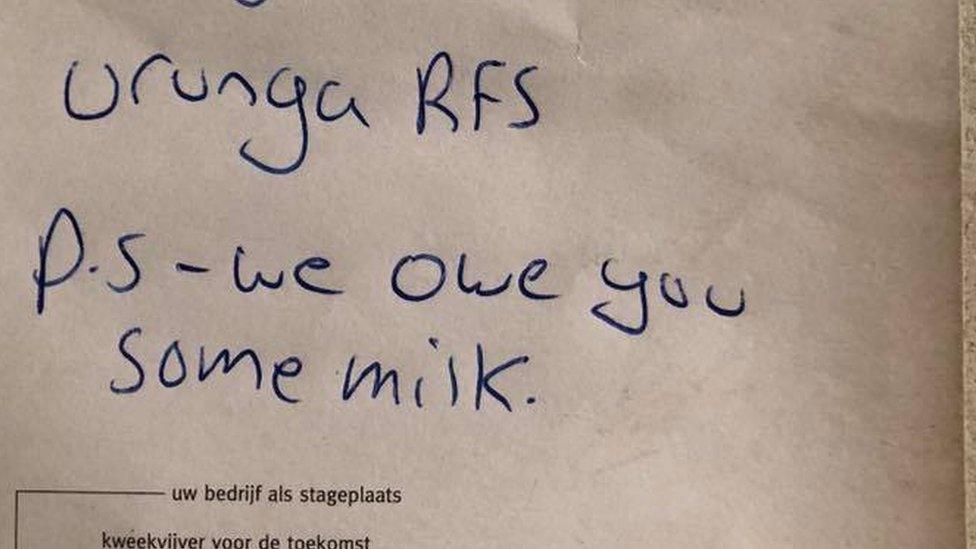Sydney smoke: Australia fires send haze over Sydney and Adelaide
- Published
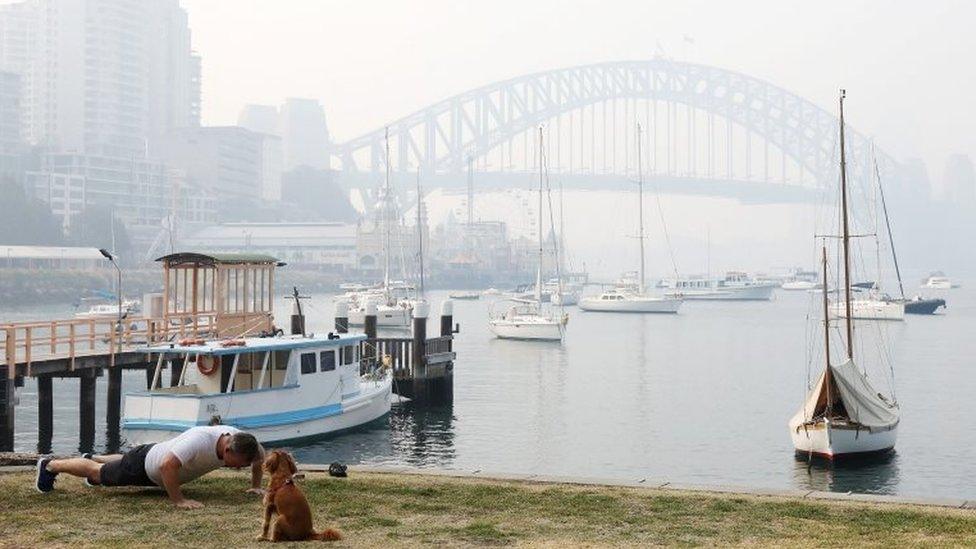
Sydney has been covered by smoke for a second time in three days
Smoke from Australia's bushfire crisis has blanketed the major cities of Sydney and Adelaide.
In Sydney, locals woke on Thursday to smoke that appeared worse than a fire-driven haze that was seen on Tuesday.
Health officials issued warnings as air quality surpassed "hazardous" levels and some residents wore face masks.
Fire conditions classified as "severe" or higher have affected all six states in the past week. Several states have faced "catastrophic" levels of danger.
Since last month, six people have died in massive bushfires which have caused the greatest damage in the eastern states of New South Wales (NSW) and Queensland.
But South Australia and Victoria have seen the most danger this week, as fires triggered emergency warnings.
This sea of fire was racing across a field north of Adelaide, South Australia
On Thursday, Prime Minister Scott Morrison again defended his government's climate change policies against criticism from former fire chiefs and others.
"To suggest that with just 1.3% of global emissions that Australia doing something differently - more or less - would have changed the fire outcome this season, I don't think that stands up to any credible scientific evidence at all," he told the Australian Broadcasting Corporation.
What's the smoke situation?
Smoke shrouded Sydney for the second time in three days, obscuring buildings and turning skies grey. About five million people live in Australia's largest city, the state capital of NSW.
Air pollution levels were worst in the city's centre and northern suburbs - with readings up to 10 times higher than the national standard.
As officials warned the smoke could linger for days, some locals described air quality as the worst they had experienced.
Allow X content?
This article contains content provided by X. We ask for your permission before anything is loaded, as they may be using cookies and other technologies. You may want to read X’s cookie policy, external and privacy policy, external before accepting. To view this content choose ‘accept and continue’.
Allow X content?
This article contains content provided by X. We ask for your permission before anything is loaded, as they may be using cookies and other technologies. You may want to read X’s cookie policy, external and privacy policy, external before accepting. To view this content choose ‘accept and continue’.
Health officials reiterated calls for people to stay indoors and to reduce physical activity, especially those with health conditions.
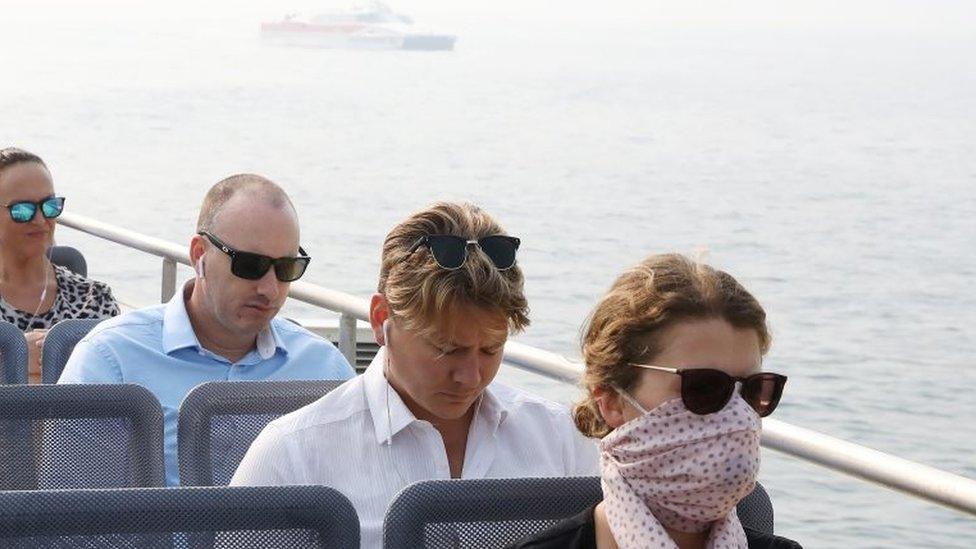
Many people elected to wear face masks in Sydney on Thursday
Residents in Adelaide, the South Australian capital, also woke to health warnings triggered by heavy smoke from a nearby blaze. About 1.3 million people live in the city.
Despite conditions improving, air quality was still rated "very poor" in most areas by 15:30 local time (05:00 GMT).
In the past 24 hours, blazes in South Australia had razed or damaged 11 houses and injured dozens of people, officials said.

'Like a dusty filter on Sydney'
Shaimaa Khalil, BBC News Australia correspondent
I woke up this morning with a sting in my throat and a cough, and immediately regretted leaving the windows open.
The smell got me before I clocked the haze outside. It's like someone used a yellowish dusty filter on Sydney.
Many are likening the air quality to Delhi and Beijing. The smoke is coming from the north and is unlikely to clear today, according to forecasters.
On social media some are arguing that there isn't enough information about air quality and what people should do.
And then of course there is the inevitable climate change debate and whether people in Australia should get used to a new normal.
Sydney was first shrouded in smoke on Tuesday from a bushfire in the region
Where is the fire danger now?
Scores of fires are raging across Australia, but the threat on Thursday was worst in Victoria and NSW - where temperatures and winds have recently increased.
Officials in Victoria have issued a "code red" - its equivalent of a catastrophic warning - for the first time in a decade. The state endured the nation's worst fire disaster in 2009, when 173 people died on what became known as Black Saturday.
Country Fire Authority chief officer Steve Warrington warned residents to leave certain areas, saying: "Do not be there. If a fire occurs, you will not survive.", external
Victoria's capital, Melbourne, was not under a code red warning - but the city reached 40.9C on (106F) on Thursday, its equal hottest November day on record.
More than 50 fires were raging across NSW - where over 1.2 million hectares has burnt since September. The forecast eased in South Australia and Queensland, but fires continued to burn in both states.
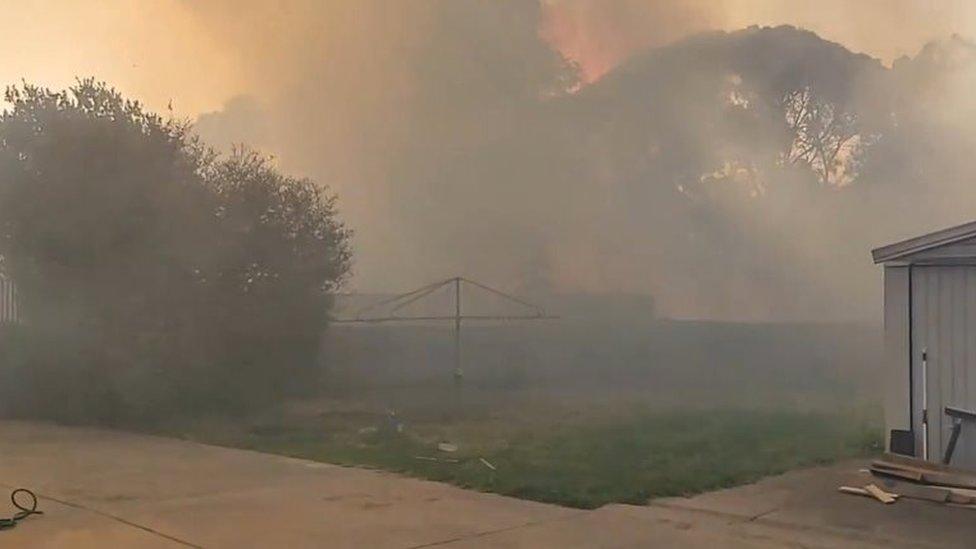
Smoke from a fire engulfs a yard in Adelaide
Tasmania had a "severe" threat level on Thursday - its most dangerous for the season - while Western Australia has also faced emergencies in recent days.
What about climate change?
Scientists and experts say that Australia's fire season has grown longer and more intense due to climate change.
According to the Bureau of Meteorology, climate change had led to an increase in extreme heat events and raised the severity of other natural disasters, such as drought.
Last year, a UN report said Australia was falling short of its Paris climate agreement commitments to cut CO2 emissions.
- Published19 November 2019

- Published20 November 2019
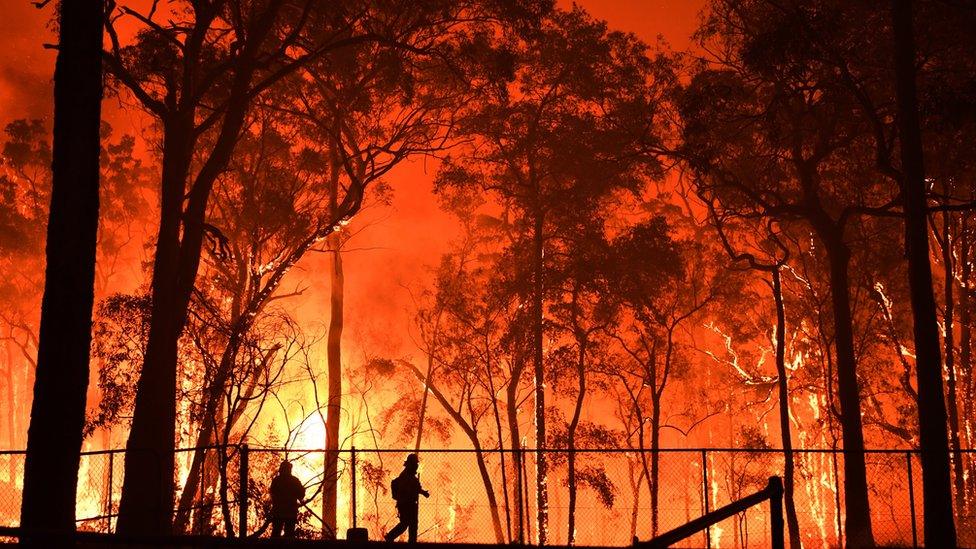
- Published17 November 2019

- Published15 November 2019

- Published14 November 2019
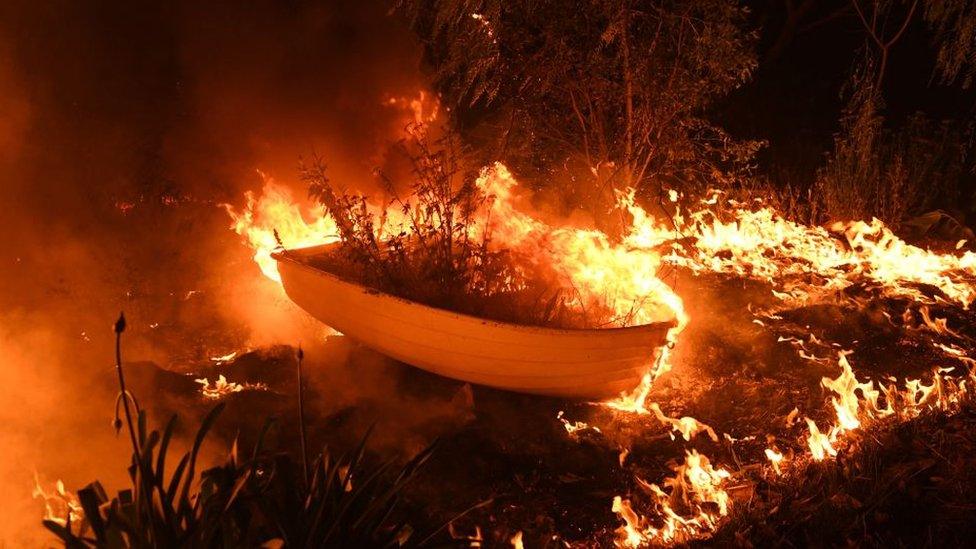
- Published13 November 2019
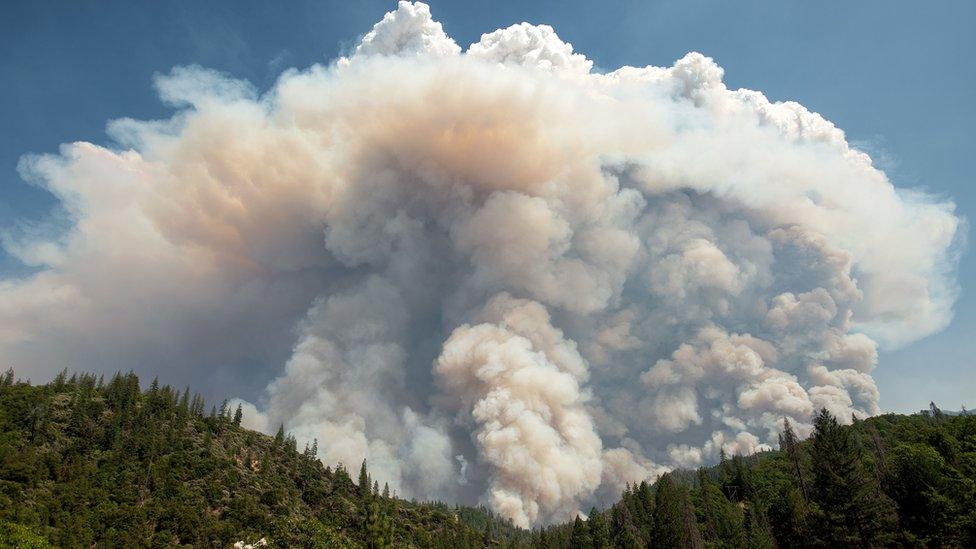
- Published12 November 2019

- Published12 November 2019
